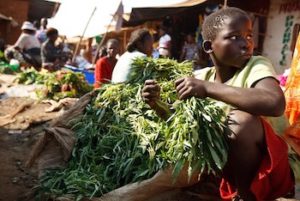
*The Luba people are affirmed on this date in 2000 BCE. The Luba or Baluba people are an ethnolinguistic group indigenous to the south-central region of the Democratic Republic of the Congo. The Majority of the Luba live in this country, mainly in its Katanga, Kasai, and Maniema provinces. The Baluba consist of many sub-groups who speak various dialects of Luba (e.g., Luba-Kasai, Luva, a Bantu language, Luba-Katanga) or other languages, such as Swahili. The Baluba developed a society and culture by about the 400s CE, later developing a well-organized community in the Upemba Depression known as the Baluba Confederation.
Luba society consisted of miners, smiths, woodworkers, potters, crafters, and people of various other professions. Their success and wealth grew significantly over time, but this also led to their gradual decline into marauding bands of slavers, robbers, and terrorists, often associated with Portuguese and Omani-led or influenced invasions. Archaeological evidence proves that the Baluba had settlements around the lakes and marshes of the Upemba Depression by the fifth century CE. The evidence suggesting an advanced Iron Age society comes from multiple sites, and these are among the best-developed archaeological records in Central Africa.
Archaeological studies suggest that the Luba people live in villages, in homes made of reeds and wattle, around the shores of numerous streams and lakes found in the Upemba Depression of Central Africa. This Depression has historically flooded from the water runoff from the southern Shaba highlands for parts of the year. Its water bodies are filled with papyrus islands and floating vegetation, and the region is drying out after the rains end. As a community, the Luba people constructed dams and dikes as high as 6 to 8 feet using mud, papyrus, and other vegetation to improve the marshy soil conditions for agriculture and stockfish during the long dry season. With settled communities, states Thomas Reefe, a professor of History, the Luba people had developed metal extraction techniques, skills to make practical products from them, and a "high degree of craft specialization."
The metalworking techniques used by the early Luba people included drawing out thin wires, twisting and laminating them, and plaiting them into complex, well-designed shapes, such as necklaces, bracelets, hooks for fishing, and needles for sewing. These products attracted interest and demand from far-off ethnic groups, creating trade opportunities and traders amongst the Luba people. This trade and all economic activity in the villages of the Luba people were governed by a tribute system, where a portion of the harvest, game, or produce was given to the lineage head or the people guarding the borders.
These were natural borders, such as those created by the waters of Lake Upemba, where passage across required channels and bridges. Thus, the movement into and out of the Luba people's lands was controlled and taxed. The date of this article was chosen to coincide with the Democratic Republic of Congo’s independence from Belgium.